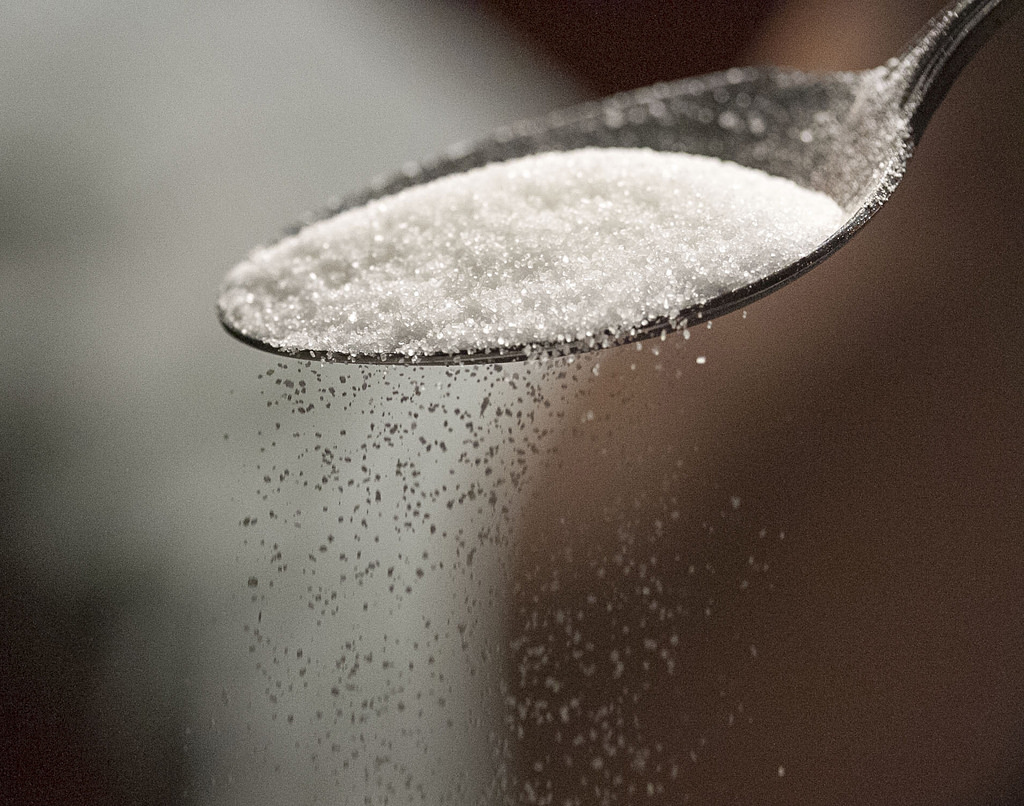By Alise Robers, Recent Arizona State University Nutrition Student
One of the most dangerous items in our diet is something we all know and love: Sugar.
This seductively sweet substance is the most popular ingredient added to foods in the US, and plays a crucial role in disease and premature aging.1 It has snuck into our ketchup, cake, cookies, bread, cereal, peanut butter, meats, soups, frozen meals, crackers, and even salad dressing.1,2 However, soft drinks take the cake with a whopping 10 teaspoons of sugar in a single can even though nutritionists suggest we only have 9.4 teaspoons of added sugar per day!

However, soft drinks take the cake with a whopping 10 teaspoons of sugar in a single can. Nutritionists suggest we only have 9.4 teaspoons of added sugar per day, for reference.6 Two hundred years ago the average American consumed 2 pounds of sugar a year.
Two hundred years ago the average American consumed 2 pounds of sugar a year.5 Sugar is denatured, devitalized, and shouldn’t be consumed at all, but today we are consuming 140-160 pounds of sugar per year!1,5 The typical American diet can easily give you almost 50 teaspoons of sugar a day, which represents about 800 empty calories.1 The average American is consuming about 20 teaspoons per day.3 This ends up being a large part of your body’s total daily requirement of food energy and is largely responsible for the fatigue, irritability, depression, and pain so many sugarholics are suffering from.1,3
Sugar in its natural state actually contains valuable nutrients. The refining process is what destroys sugar and makes it a very poor source of energy. The convenience and price of this substance are what give it the upper hand. It lures you in under the impression that it is a “feel good” food, which in a way is true. Sugar is absorbed very quickly into the bloodstream and this is when you get a rush of energy (feel good). 1,3 As a result, the pancreas releases large amounts of insulin to try and bring your blood sugar back down.1 Once these levels have dropped you feel tired and are left with the hunger for more sugar. This up and down cycle is extremely hard on your body and can be easily avoided by simply reading nutrition labels. Paying attention to food labels is important because of how many different products sugar is hiding in.
This up and down cycle is extremely hard on your body and can be easily avoided by simply reading nutrition labels. Paying attention to food labels is important because of how many different products sugar is hiding in.4 It goes undercover and even uses different aliases. Some of sugar’s most common disguises are listed below.
- Glucose
- Corn syrup
- Sorbitol
- Molasses
- Maltose
- Corn sweetener
- Sucrose
- Brown sugar
- Fructose
- Honey
- Lactose
- Fruit juice concentrate
- High-fructose corn syrup
- Sorghum syrup
- Dextrose
At this point, you may be thinking that artificial sweeteners are the next best thing, especially because they are even FDA approved. Sadly, they are just as bad. These sugar wannabes are found in many foods and beverages and are marketed as “sugar-free” or “diet”. They are found in soft drinks, jellies, chewing gum, baked goods, candy, fruit juice, ice cream, and even yogurt. However, the FDA has established an acceptable daily intake for each artificial sweetener that is supposed to be about 100 times less than the smallest amount that might cause health concerns.2
Our bodies have been trying to tell us that it needs a full assortment of nutrients to survive and that sugar (in the amounts that we eat it) just won’t do the trick. Sugar is the culprit of so many health issues like obesity, diabetes, and tooth decay.1 The elimination of refined sugar is a huge step towards a disease free, pain-free life!

